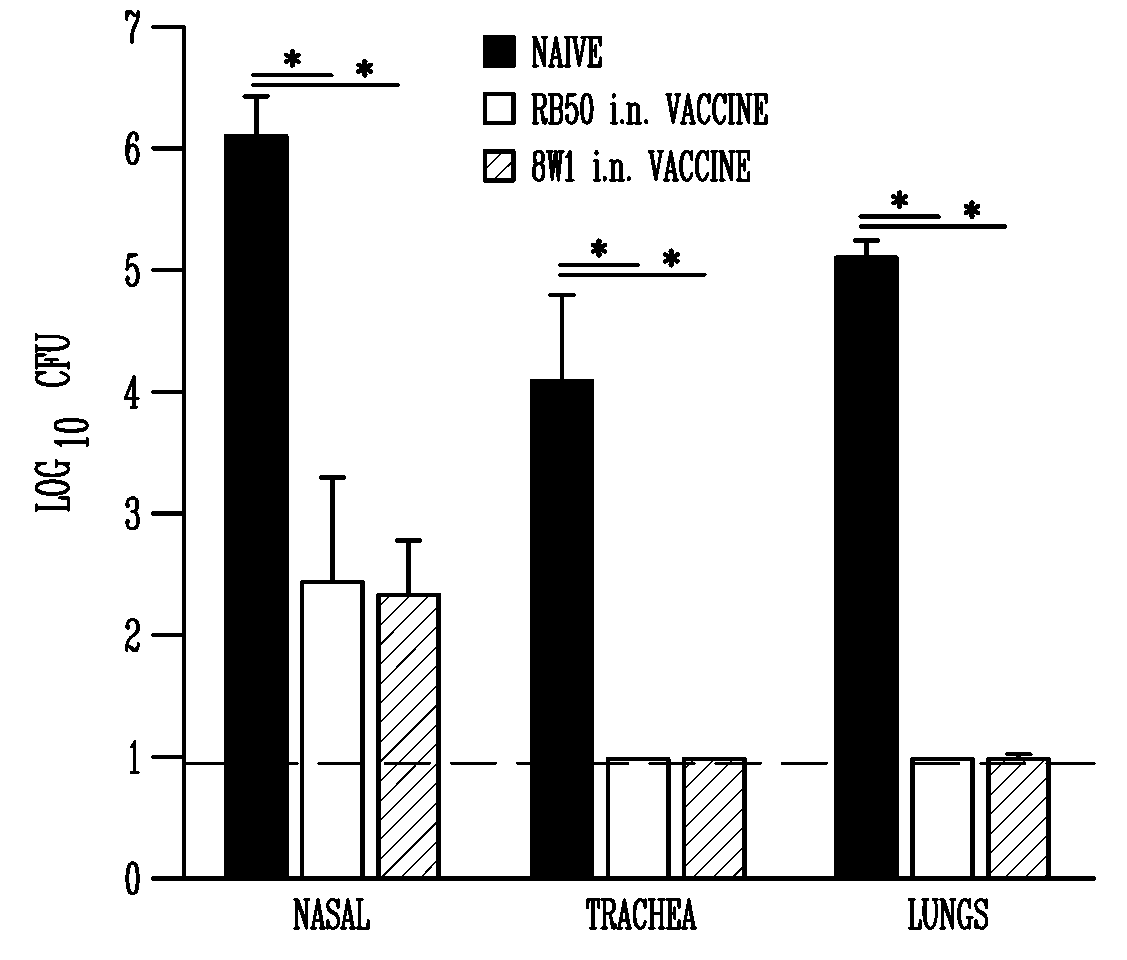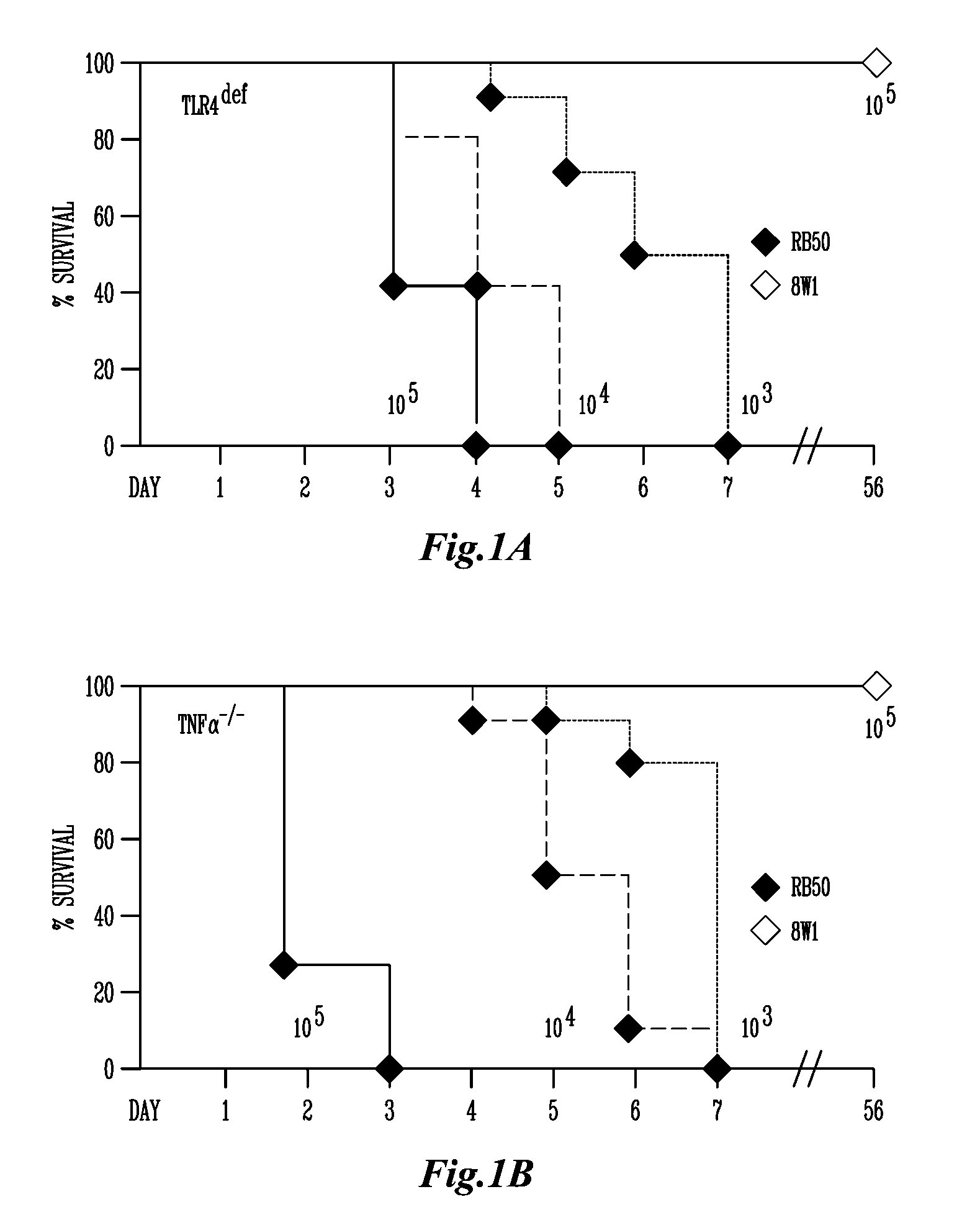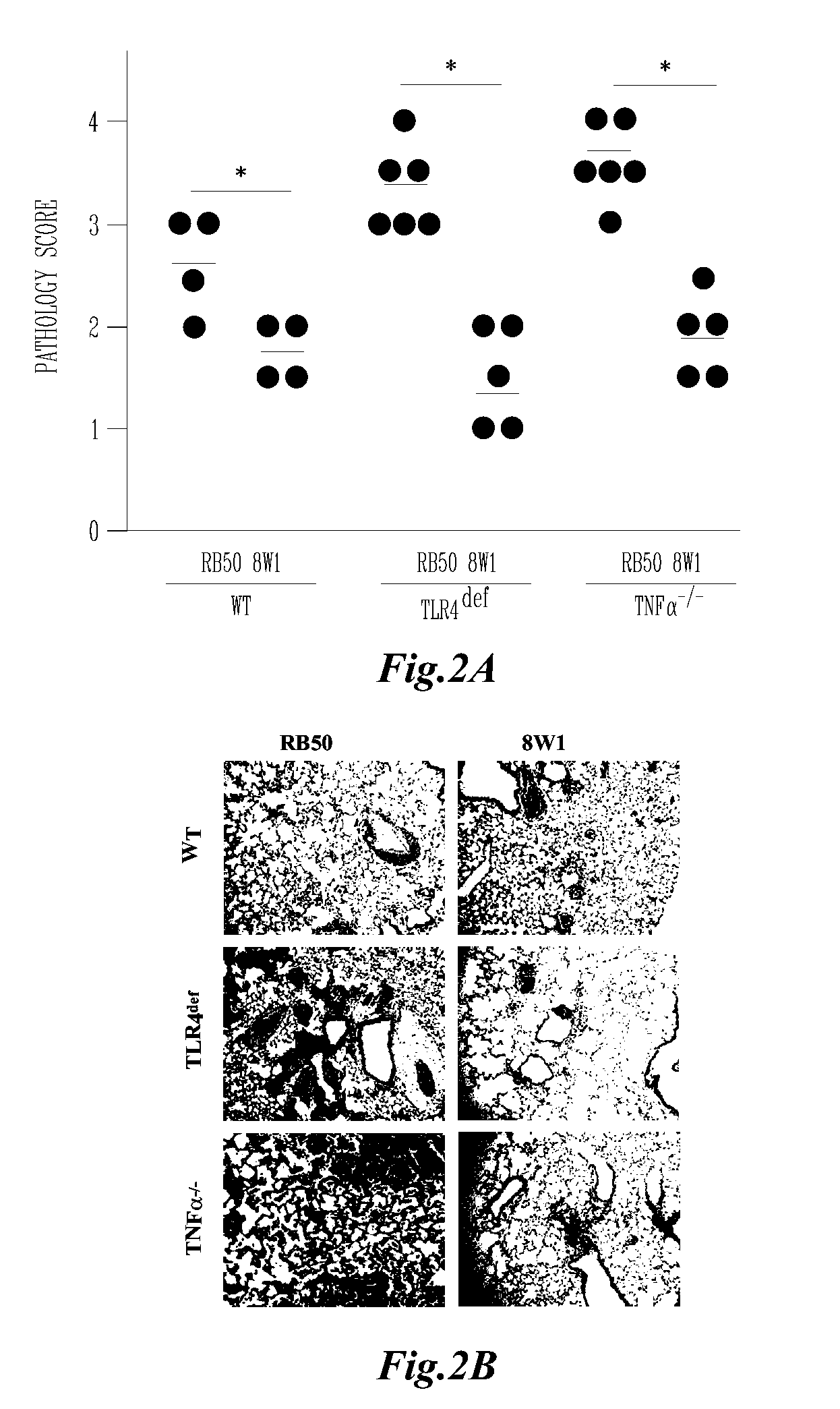Use of an avirulent bordetella mutant as a live vaccine vector
a technology of bordetella and vaccine vector, which is applied in the direction of antibody medical ingredients, immunological disorders, drug compositions, etc., can solve the problems of individuals susceptible to disease, serum antibody titer not always correlated with protection, and inability to prevent infection, so as to prevent the effect of reversion
- Summary
- Abstract
- Description
- Claims
- Application Information
AI Technical Summary
Benefits of technology
Problems solved by technology
Method used
Image
Examples
example 1
Use of a Genetically Defined Double Mutant strain of B. bronchiseptica Lacking Adenylate Cyclase and Type III Secretion as a Live Vaccine
[0099]While most vaccines consisting of killed bacteria induce high serum antibody titers, they do not always confer protection as effective as that induced by infection, particularly against musocal pathogens. Bordetella bronchiseptica is a gram-negative respiratory pathogen that is endemic in many non-human mammalian populations and causes substantial disease in a variety of animals. More than 10 different live attenuated vaccines are available against this pathogen for use in a variety of livestock and companion animals. However, there is little published data on the makeup or efficacy of these vaccines, and each has serious limitations, described above. Here we report the use of AVS, a genetically engineered double mutant of B. bronchiseptica, which lacks adenylate cyclase and type III secretion, as a vaccine candidate. This strain is safe at h...
example 2
Materials and Methods
[0100]Bacteria were maintained on Bordet-Gengou agar (Difco) with 10% defibrillated sheep's blood, inoculated into Stainer-Scholte broth at optical densities of 0.1 or lower, and grown to mid-log phase at 37° C. on a roller drum. Wild-type strains of B. bronchiseptica (RB50), B. parapertussis (12822), and B. pertussis (BP536) have been described previously (Cotter, P. A., and J. F. Miller. 1994. BvgAS-mediated signal transduction: analysis of phase-locked regulatory mutants of Bordetella bronchiseptica in a rabbit model. Infect Immun 62:3381-3390; Heininger, U., P. A. Cotter, H. W. Fescemyer, G. Martinez de Tejada, M. H. Yuk, J. F. Miller, and E. T. Harvill. 2002. Comparative phenotypic analysis of the Bordetella parapertussis isolate chosen for genomic sequencing. Infect Immun 70:3777-3784; Relman, D. A., M. Domenighini, E. Tuomanen, R. Rappuoli, and S. Falkow. 1989. Filamentous hemagglutinin of Bordetella pertussis: nucleotide sequence and crucial rol...
example 3
Results
AVS is Avirulent in Susceptible Mouse Strains
[0105]The deletion of adenylate cyclase and the ATPase necessary for type III secretion results in the ablation of in vitro cytotoxicity by AVS when compared to the parental wildtype strain, RB50 (Harvill, E. T., P. A. Cotter, M. H. Yuk, and J. F. Miller. 1999. Probing the function of Bordetella bronchiseptica adenylate cyclase toxin by manipulating host immunity. Infect Immun 67:1493-1500; Stockbauer, K. E., A. K. Foreman-Wykert, and J. F. Miller. 2003. Bordetella type III secretion induces caspase 1-independent necrosis. Cell Microbiol 5:123-132), suggesting that this mutant may have attenuated virulence during infection. However, this mutant bacteria has not previously been examined in vivo. To determine if AVS is less virulent during infection we examined the ability of this mutant to cause lethal disease in immunocompromised mice lacking TLR4 or TNFα. Wildtype B. bronchiseptica infection in these immunocompromised mice has bee...
PUM
| Property | Measurement | Unit |
|---|---|---|
| volume | aaaaa | aaaaa |
| optical density | aaaaa | aaaaa |
| optical densities | aaaaa | aaaaa |
Abstract
Description
Claims
Application Information
 Login to View More
Login to View More - R&D
- Intellectual Property
- Life Sciences
- Materials
- Tech Scout
- Unparalleled Data Quality
- Higher Quality Content
- 60% Fewer Hallucinations
Browse by: Latest US Patents, China's latest patents, Technical Efficacy Thesaurus, Application Domain, Technology Topic, Popular Technical Reports.
© 2025 PatSnap. All rights reserved.Legal|Privacy policy|Modern Slavery Act Transparency Statement|Sitemap|About US| Contact US: help@patsnap.com



